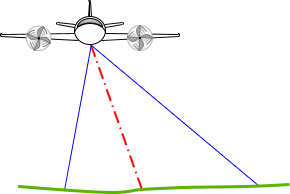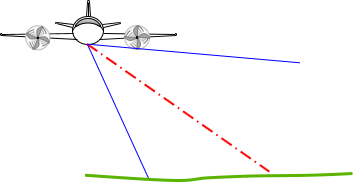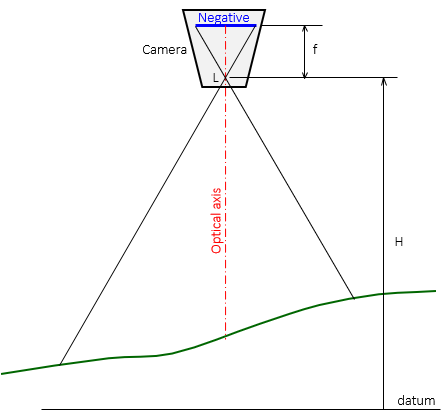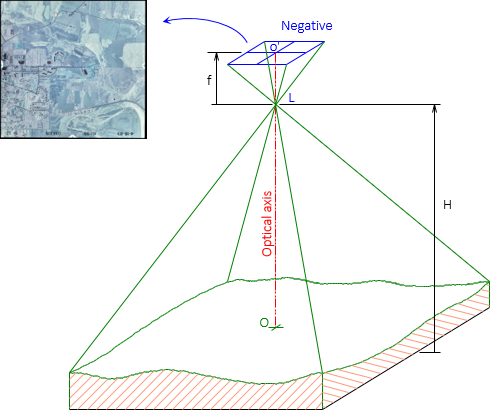C. Single Vertical Photo
1. Vertical Photography
Most metric mapping photographs are vertical, where the camera's optical axis is within 2° of vertical. Images for interpretative and/or support purposes can be intentionally tilted: low- (does not contain horizon) or high- (contains horizon) oblique, Figure C-1.
 |
 |
| (a) Low oblique | (b) High oblique |
| Figure C-1 Tilted Photos |
|
Panoramic images can also be captured by rotating the lens from horizon-to-horizon perpendicular to the flight path.
The basic geometry of a vertical aerial image is shown in Figure C-2.
 |
| Figure C-2 Vertical Photograph |
Where:
L is the optical center of the lens.
f is the focal length, the perpendicular distance from the lens center to the negative.
H is the height above datum.
The image is captured on the negative where color and optical geometry are reversed, Figure C-3.
 |
| Figure C-3 Negative |
A positive is a reversal of the negative; it's the image of the area we expect to see.
The physical size of the negative depends on the film used, usually 9" x 9" nominally for mapping. The positive may be larger or smaller depending on how it is produced. For most applications, a positive is created by contact printing making it the same size as the negative.
Using the same format sizes, Figure C-4 shows the addition of a positive to the geometry.
 |
| Figure C-4 Positive |